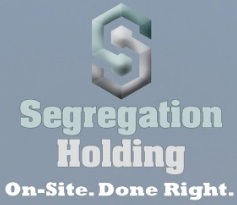Cost segregation benefits hotel property owners by accelerating depreciation on personal property. Personal property, for the purposes of cost segregation, are assets that enhance the real property, but are non-structural in nature.
personal property. Personal property, for the purposes of cost segregation, are assets that enhance the real property, but are non-structural in nature.
Examples of personal property for hotels would include carpeting and most flooring choices, decorative lighting, cabinetry, dedicated electrical systems, dedicated plumbing systems, power generator, security systems, wifi/internet cabling, parking lot, curbs, sidewalk, landscaping, fountains, and the list goes on.
Cost segregation identifies these assets according to the IRS
Audit Techniques Guide and MACRS. MACRS (Modified Accelerated Cost Recovery System) is the method of depreciation the IRS requires of hotel property owners.  MACRS comprises 5, 7, 15, 27½ and 39 year asset classes. Hotel property is a 39 year depreciable asset. Cost segregation is best applied using the IRS recommended engineer-based and engineer-conducted study. When cost segregation is applied properly to a hotel property, an average of 30% of the total assets is reallocated to 5- and 15-year life classes.
MACRS comprises 5, 7, 15, 27½ and 39 year asset classes. Hotel property is a 39 year depreciable asset. Cost segregation is best applied using the IRS recommended engineer-based and engineer-conducted study. When cost segregation is applied properly to a hotel property, an average of 30% of the total assets is reallocated to 5- and 15-year life classes.
As hotel owners and proprietors know, there are many areas requiring daily maintenance and frequent updating. Entries, lobbies and hallways are notorious for having carpeting replaced every 3 or 4 years due to the high-traffic nature of the area.  Most depreciation schedules will reflect all assets being depreciated over 39 years. This is the simplest method by which to depreciate property. However, it isn’t tax compliant nor is it beneficial to the hotel owner. This is one area where IRS has turned a blind eye to this practice. The “whys” are numerous to consider but the most widely rumored reason is the increased revenue to the IRS.
Most depreciation schedules will reflect all assets being depreciated over 39 years. This is the simplest method by which to depreciate property. However, it isn’t tax compliant nor is it beneficial to the hotel owner. This is one area where IRS has turned a blind eye to this practice. The “whys” are numerous to consider but the most widely rumored reason is the increased revenue to the IRS.
Cost segregation applies MACRS to those short-life assets accelerating depreciation and reducing the hotel owner’s income tax burden. This results in an increased cash flow in the first 6 years of ownership for a newly acquired or constructed hotel. If the hotel has been owned for 5 or more years then the hotel owner qualifies to have all unrealized depreciation carried forward into the current tax year. Furthermore, if the hotel was purchased or constructed from January 1, 1987, the hotel qualifies for accelerated depreciation using cost segregation. All improvements and renovations will qualify as well based on their individual completion dates.
Cost segregation study fees vary considerably from firm to firm. Typically, though, hotel owners can engage cost segregation and realize very high ROIs. It is not uncommon to receive a 2000% return on investment, or even more, when the better, more  experience cost segregation firm is chosen. Hotel owners can expect a cost segregation study to cost between five thousand and fifteen thousand dollars, depending upon several factors. These factors include size of the property (acreage and building square footage), quality of construction, location, availability of construction documents, closing statements, and more. Of course, the larger and more elaborate hotel facilities and “convention” properties are exceptions to this norm.
experience cost segregation firm is chosen. Hotel owners can expect a cost segregation study to cost between five thousand and fifteen thousand dollars, depending upon several factors. These factors include size of the property (acreage and building square footage), quality of construction, location, availability of construction documents, closing statements, and more. Of course, the larger and more elaborate hotel facilities and “convention” properties are exceptions to this norm.
While cost segregation isn’t the “holy grail” of tax strategies, it is certainly a tremendous tool that should always be considered when buying or constructing a new hotel property. It is always wise to engage the services of competent tax professionals when considering cost segregation.
Nevertheless, cost segregation delivers results every time it’s applied.
For more information on how to obtain a free, no obligation analysis, contact us at:
[email protected]
www.SegregationHolding.com
Twitter
or call 972-897-8019 for a direct consult.


